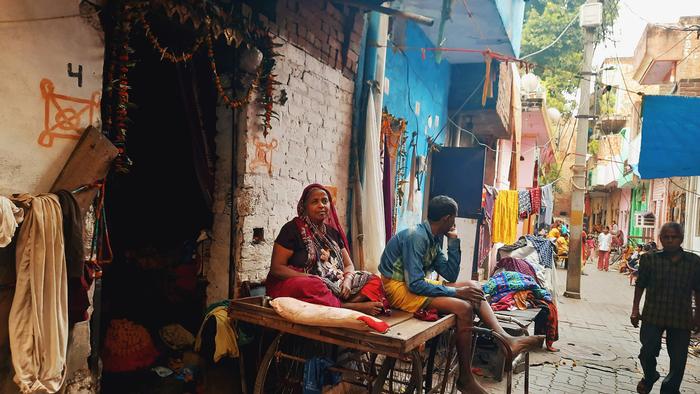Ieshika Singh and Ashima Saini - ProposalGreying Hair and Hopes: Senior Citizens of MukarimnagarIt is 4 AM and the rhythmic ringing of temple bells wakes up the small community of Mukarimnagar. There is a lazy bustle of movement around the Mankameshwar temple as flower and prasad vendors set up shops and worshippers stream into the temple complex. Also, present right outside the temple, are several rows of beggars who will be distributed food and prasad once the morning prayers conclude.
It is a diverse group of people and pertinent to note here is the percentage of elderly participants. Manning the prasad shops, sitting on the temple stairs, begging, or setting up shops, this small community houses a considerable number of senior citizens engaged in the informal sector.
India presently does not have adequate policies to support its elderly or to provide them with appropriate social security post-retirement. This means that while public sector workers get benefits post-retirement, an informal sector worker or a self-employed individual continues to work well after their retirement to meet their daily needs. But for this category of senior citizens, old age is not equivalent to the comforts of retirement but a continuous struggle to survive. More than an old age home or a senior retreat that they cannot afford, they require social security and access to proper healthcare.
Located near the Gomti river bank in Lucknow, Uttar Pradesh, Mukarimnagar ekes out a livelihood within the urban socio-economic structure. Most of the elderly who work in the informal sector here either reside in one of the tiny houses lining the narrow alleys that branch from the main roads or do not have a permanent shelter at all. In the latter case, streets, and if they are fortunate enough, thelas (a pushcart used for selling goods) and rickshaws assume the dual role of being their source of income as well as temporary abodes.
The typical house plan consists of a kitchen area and a common room on the ground floor which usually stores raw materials for the shops, and a first floor consisting of living quarters. In most cases, this one house accommodates three generations within it. The congested houses along with alleys lack community facilities such as drinking water, sanitation, planned streets and open greens. The living conditions in Mukarimnagar hardly pass muster.
The tragedy of the matter lies in the fact that there is not one design response in this community that facilitates the lives of this particular section. While the temple complex does generate some amount of job opportunities for the elderly (vendors, cleaners, etc.), it still fails to provide any sort of social security. Furthermore, housing problems, universally accessible spaces and access to proper healthcare are still some of the issues left unattended.
In the essay, we will expand on how architecture, such as the designing of integrated community centres, aided by government and private sectors, has been applied to resolve similar issues in communities around the world and how they can be tailored to fit the needs of the elderly of Mukarimnagar.
Additional Help and InformationAre you in need of assistance? Please email info@berkeleyprize.org. |


